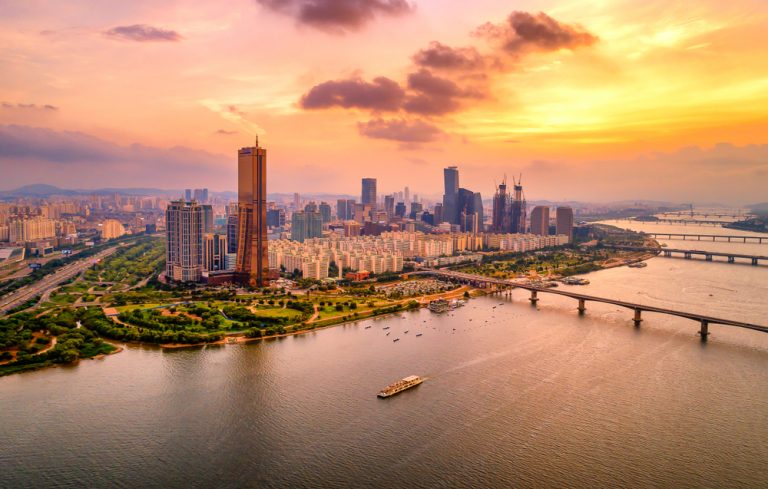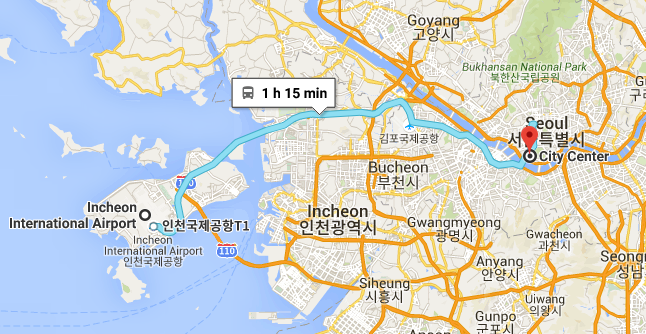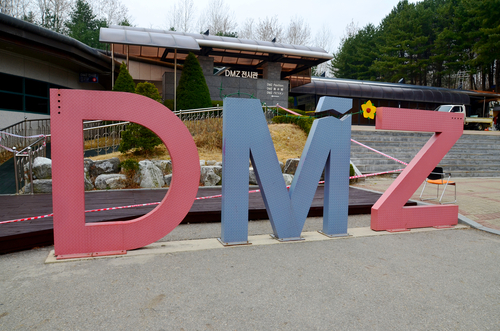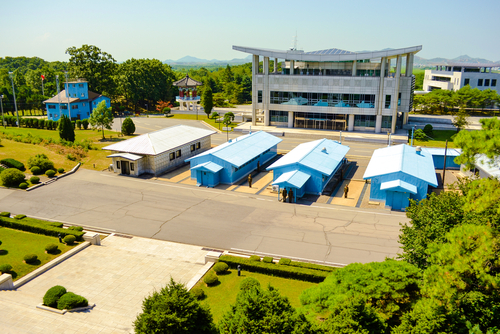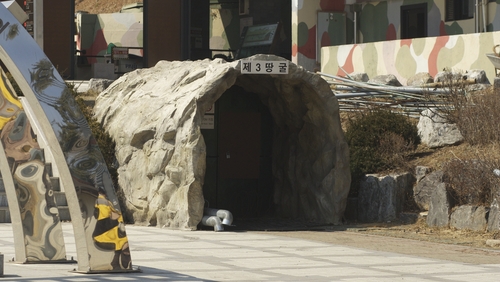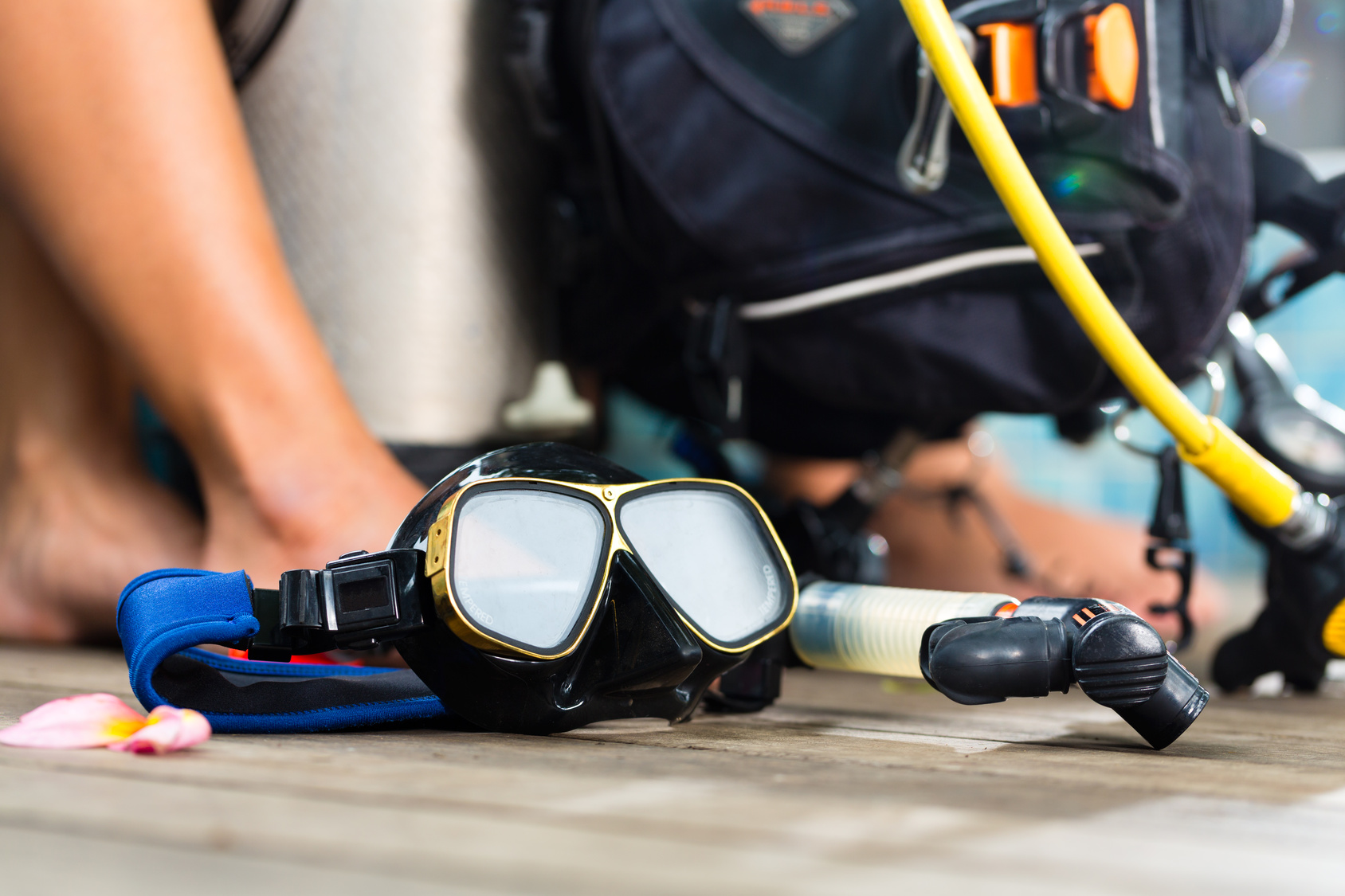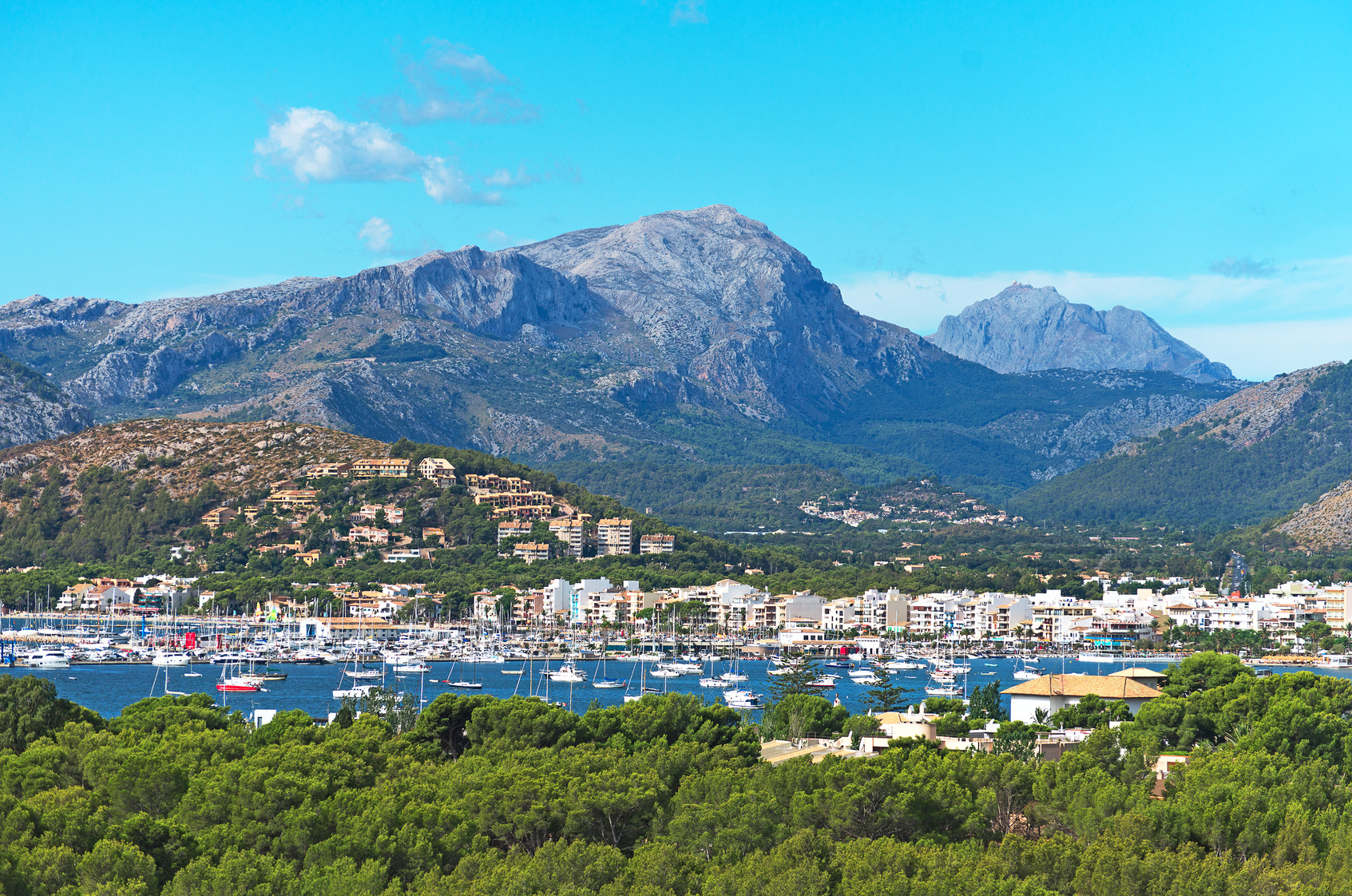The signing of the Korean Armistice Agreement in 1953 ostensibly ended the Korean War although a final peace treaty has never been agreed. As a result the Korean Demilitarized Zone (DMZ) was established to separate North and South Korea. This buffer zone is approximately 250km long and 4km wide and contains a Joint Security Area (JSA) where any negotiations between the two nations have taken place since the end of hostilities. An important meeting took place at the JSA in April 2018 when South Korean President Moon Jae-in met his North Korean counterpart Kim Jong-un. The two leaders agreed to try to come up with a formal peace agreement which would officially end the Korean War.
More than 120,000 tourists per year join official tours from Seoul to the DMZ making them the most popular day excursion from the capital. As well as visiting the JSA tour highlights include a number of other attractions along the DMZ such as the infiltration tunnels between the North and the South, the Odusan Unification Observatory from where you can get a glimpse of life in North Korea and the Bridge of No Return where prisoners exchanges took place at the end of the war.
Seoul Travel Basics
Arrivals: Visitors to Seoul will arrive at the Seoul-Incheon International Airport which lies 50km west of the capital. The fastest way into the city is my means of the Airport Railroad Express (AREX) otherwise you can arrange private transfers from Seoul Airport and have a driver waiting for you when you arrive.
Transport: The easiest way to travel around the sights of Seoul is by means of its world-class metro network. This system is fast, clean and safe. It’s well worth buying a Metropolitan Pass (MPASS) which is a multi-day travel ticket allowing for up to 20 journeys per day.
Accommodation: There are thousands of hotels in Seoul catering to every budget. Popular districts for tourists to stay in include Indasong, Myeongdong and Hongdae.
Practical DMZ Tour Information
Booking a Tour: Independent travel to the DMZ is not an option so visitors have to book an official tour online or with travel agencies in Seoul. It is recommended that you book your DMZ tour a few days in advance and try to book for as early as possible during your stay so that it can be rearranged if it happens to be cancelled at short notice due to tensions at the border. Half and full-day tours are available which last approximately 6 or 10 hours respectively. The full-day option is recommended as it’s an hour’s drive from Seoul (traffic permitting) with a lot to see on arrival. The half-day tour can feel very rushed.
Meeting Point: Pick-up points vary depending on the tour company. You may be collected from your hotel or from pre-arranged meeting places in the city such as the President Hotel or the Hongik University Station. Be sure to confirm with your tour operator where you wish to be collected and arrive 10 minutes before the agreed time.
Passports: You must carry your passport with you on the day of the tour as it will be checked by US military personnel at the JSA.
What to Wear: Until recently tourists on this tour have been advised to dress conservatively and avoid wearing anything which might be construed as military attire. However, following the disarmament of the JSA in October 2018 it was agreed to allow foreign tourists and South Korean civilians to visit the JSA without dress restrictions. Check with your tour company to ensure that this agreement still stands.
Physical Fitness: Be aware that a reasonable level of physical fitness is required on this tour due to the amount of walking involved. The most strenuous activity is walking up to the Dora Observatory and the steep climb out of the nearby 3rd Infiltration Tunnel.
Visiting The Joint Security Area
The highlight of a visit to the DMZ is the Joint Security Area (JSA) at Panmunjeom. This is where all negotiations between North and South Korea have taken place since the armistice was signed in 1953. In spite of this agreement there have been many incidents along the border over the years which have led to both military and civilian casualties on both sides. In fact tourists have long been required to sign a waiver confirming that they accept responsibility for their own well-being when visiting the JSA. Such stories are of grave concern to many tourists in Seoul who are wondering whether to sign up for the DMZ tour.
The good news is that there is no longer any cause for concern as visits to the JSA were suspended in October 2018 for 7 months whilst landmines, guard posts, weapons and armed guards were removed from the area. The zone is now manned by unarmed soldiers from the United Nations Command (UNC) and the Korean People’s Army (KPA). The hostile atmosphere of the recent past has been replaced with a peaceful vibe which will hopefully prove to be a major stepping stone in achieving a lasting peace between the two nations.
Visits begin with a newly created video which strives to reflect a more peaceful tone between the two sides than was communicated before the recent thawing of tensions. You’ll then be allowed to step over the border into North Korea which runs through the centre of the blue United Nations’ buildings and maybe get a photo with a North Korean soldier in the UNCMAC (United Nations Command Military Armistice Commission) room.
New agreements between Moon Jae-in and Kim Jong Un will soon allow tourists to move freely within the JSA providing access to the blue footbridge where the two leaders chatted during the Panmunjom summit of April 2018 and the memorial tree which they planted near the Military Demarcation Line.
Other Attractions inside the DMZ
Most tours to the DMZ offer very similar itineraries which will include some or all of the following sights:
3rd Infiltration Tunnel: During the 1970s Kim Il-sung, the President of North Korea, ordered the digging of tunnels underneath the DMZ in preparation for an assault on South Korea. The South Koreans only learned of these plans thanks to information received from North Korean defectors. So far four tunnels have been discovered although there are believed to be as many as twenty of them. This 3rd tunnel which was never completed is highly significant as it is only 44km from Seoul and is big enough to have have allowed light artillery and 30,000 soldiers per hour to enter South Korea. Visitors entering the tunnel should be in reasonable shape as it’s a long, steep walk into the tunnel which you then have to walk back up to get out.
Dora Observatory: Standing on top of Mount Dora this allows visitors to look across the DMZ into North Korea using binoculars. The main thing to look for is a fake village called Kijong-dong which was built in the 1950s to try to get South Koreans to defect to the North.
Dorasan Station: Standing near the observatory this largely symbolic train station is the last one before the border. It was built so that one day it will connect with the railway network of North Korea and provide a service all the way to Pyongyang in a reunified nation. It is served by a few daily commuter services from Seoul.
Bridge of No Return: At the end of the Korean War prisoners from both sides were brought to this bridge which crosses the Military Demarcation Line (MDL) and were allowed to stay on the side where they were captured or return to their homeland. Once they had made their decision there was no going back hence the name of the bridge.
Outside the DMZ: Time permitting some tours might stop at the Imjingak Memorial Park which lies across the Imjin River to the south of the JSA. Its main attraction is the Bridge of Freedom which was a railway bridge used by prisoners returning from the North. The nearby Odusan Unification Tower from where you can see across into North Korea also appears on some itineraries.
About Shuttle Direct
Shuttle Direct is one of the world’s most established and respected airport transfer providers. Our services are available throughout Europe as well as in North Africa, the Middle East, Southeast Asia and South America. Our friendly local drivers will ensure your safe, economical and convenient passage to and from the airport, cruise terminal or major train station of your choice with a minimum of fuss. Book your transfer with our easy to use online booking system and leave the rest up to us!

